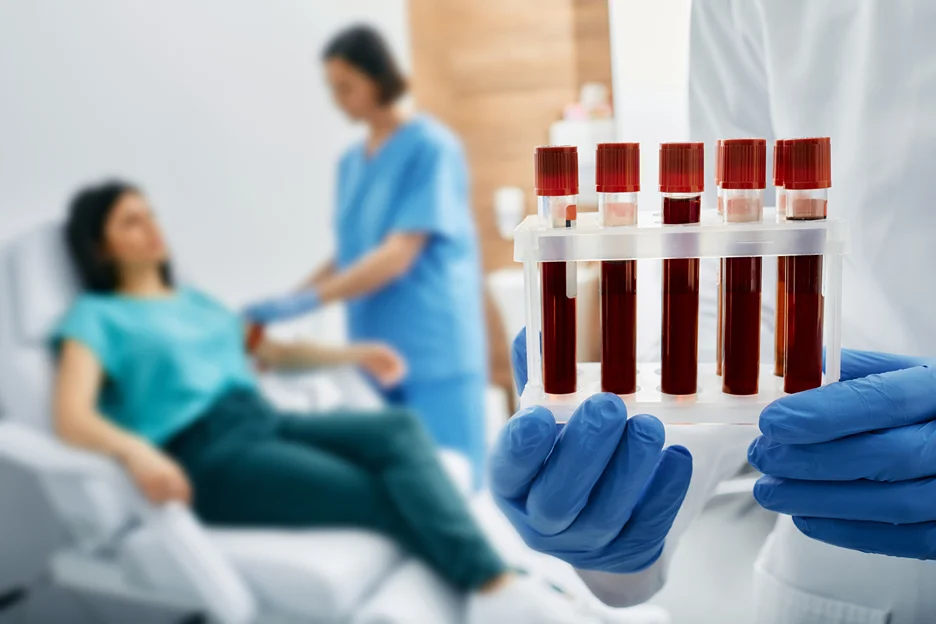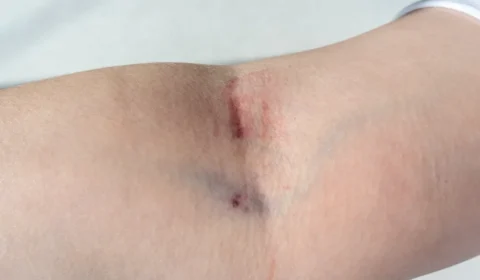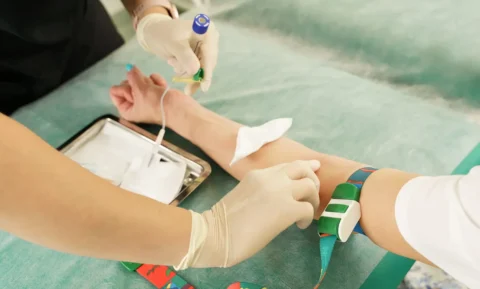Getting blood drawn is one of the most common medical procedures. Yet for many patients, it can cause anxiety and discomfort if not done properly. Using the right technique and equipment is essential to ensuring a smooth blood collection process.
As a healthcare provider performing venipuncture, you know how important it is to get butterfly needle assembly right. Choosing the ideal needle size for each patient’s veins takes practice. Following evidence-based techniques for smooth insertion and removal prevents problems like blown veins or repeated sticks.
That’s why we want to walk you through the key steps for properly prepping these winged infusion sets. Our guide will cover the best veins to choose, angle and motion for needle insertion, and practices for keeping patients comfortable and safe. We’ll also share tips for proper disposal and infection control after the draw.
Understanding Butterfly Needle Parts
Butterfly needles, also known as winged infusion sets, are common venipuncture devices used to collect blood for laboratory testing. The needle assembly consists of several components:
- Needle – This is a hollow, straight stainless steel needle with a sharp bevel. It penetrates the vein to access blood flow.
- Plastic sheath – Covers the needle for safety when not in use. Remove prior to venipuncture.
- Flexible tubing – Clear plastic tubing connects to the needle to transport blood flow.
- Luer adapter – Located at the end of the tubing, this connects to the vacutainer holder.
- Tube holder – Holds vacutainer tubes during a draw. The adapter is attached here. Take note that some butterfly needles have a tube holder built into the connector rather than a separate tube holder component.
- Safety shield/cover – Found on newer designs, this slides over the needle after use. Newer designs incorporate a safety shield or retractable needle instead.
Selecting the Proper Butterfly Needle Size
These needles come in a range of gauges, with higher numbers indicating thinner diameters. Common sizes include:
| Gauge | Usage |
| 21 | Largest, for moderate to large veins with rapid flow |
| 23 | Most common size, suitable for average veins |
| 25 | Smaller option used on fragile, small, or superficial veins |
The vein size, depth, fragility, and typical flow rate help determine the ideal needle gauge for each patient. Smaller needles are preferable for pediatric patients, the elderly, those with difficult veins, or individuals prone to bruising. Larger butterflies allow faster draws from deeper, robust antecubital veins with high blood flow.
In most cases, 21 to 23-gauge needles adequately perform routine phlebotomy. Higher gauges may increase the risk of hemolysis.
Make size selections on an individual basis considering the patient’s unique vascular characteristics. Thinner needles may require more insertion attempts, so balance minimizing discomfort with the likelihood of successful access.
Step-by-Step Butterfly Needle Assembly
Ready to assemble your needle? Follow these steps:
- Identify the intended vein and select an appropriate needle gauge based on vessel size and fragility. For routine blood collection, 21- or 23-gauge butterflies suffice for most adults.
- Remove the needle’s sterile plastic cover or sheath by pulling it straight off to expose the sharp tip. Discard this cover.
- Take the adaptable end of the butterfly tubing and securely insert it into the luer adapter, tube holder, or other intended connecting device. Twist to engage any threads for a tight seal.
- Place the tubing neatly within the holder’s built-in clamp or channel, taking care not to kink the tubing.
- If using a safety butterfly needle with a retractable shield, now is the time to activate its sharps injury prevention mechanism per the manufacturer’s instructions. This typically involves flipping a small lever to engage the shield.
- Your device is now ready for use! Be sure to handle it carefully by gripping only the tubing or hub. Do not touch the sterile needle itself.
Selecting the Best Veins for Butterfly Needle Phlebotomy

Choosing an appropriate vein site helps ensure successful, comfortable blood draws using these types of needles. Veins that are easily accessible and visible on the arm are common targets. Ideal options include:
| Vein | Description |
| Median Cubital | A large vein in the antecubital fossa or elbow pit. Offers excellent flow. |
| Cephalic | Runs along the radial or thumb side of the forearm. Easily accessible. |
| Basilic | Located on the ulnar or pinky-side of the arm. A prominent, large-diameter vein. |
| Dorsal Hand/Foot | Veins along the top surface of hands or feet. Use if arm veins are less visible. |
Consider the individual patient’s vessels when selecting puncture sites. Avoid fragile or damaged veins. Look for adequately sized vessels that are straight, superficial, and with minimal valves. Proper tourniquet usage can distend veins.
Insertion Technique for Optimal Access
The technique you use when inserting a butterfly needle makes all the difference. Follow these evidence-based tips:
Preparation
- Choose a needle (winged blood collection set) only when circumstances require it, such as for blood cultures, small veins, or greater control.
- Gather supplies: butterfly needle, tube holder, tourniquet, antiseptic wipes, sharps container, tubes.
- Attach the needle to the tube holder.
- Remove the needle cover and position the bevel up.
Procedure
- Apply a tourniquet 2-4 inches above the venipuncture site.
- Cleanse the venipuncture site with alcohol in a circular outward motion; allow it to dry.
- Insert the needle into the vein at a 10- to 30-degree angle with the bevel up.
- For blood cultures, fill the aerobic bottle first to remove air from the tubing.
- Release tourniquet after accessing vein.
- Fill tubes in order of draw.
- Remove the tube from the holder when filled.
- Apply gauze and remove the needle from the vein.
- Activate the safety device and dispose of the needle in a sharps container.
- Label tubes immediately after collection.
Aftercare
- Apply pressure with gauze to stop bleeding.
- Bandage site and instruct the patient on signs of complications.
Proper Patient Care and Communication During Butterfly Draws
Blood collection using these needles demands practitioner skills beyond proper insertion technique. Caring for the patient physically and emotionally is equally important.
- Explain the procedure in simple terms and address any concerns they have. This helps ease anxiety.
- Allow them to get into a comfortable position that provides you with the best vein access. Impart support with pillows.
- Use warmth, massage, gravity, tapping, or rotation techniques to fill veins if needed.
- Distract patients from the needle stick by talking them through it with calm, affirming comments.
- After withdrawing the needle, immediately apply gentle pressure with gauze for at least 5 minutes to prevent bleeding or hematoma formation.
- Check for bruising, arm mobility, sensation, and excessive pain before discharge. Recommend warm compresses and OTC pain relievers as needed.
- Administer a bandage and advise them to leave it in place for 2 hours or more. Instruct on signs of complications warranting follow-up.
- Instruct patients to avoid strenuous activity with the arm for several hours after the blood draw.
- Remind them to seek medical attention for significant bruising, bleeding, swelling, tingling/numbness in the arm.
Safe Butterfly Needle Removal and Disposal
All blood exposure carries infection risks. Safely handling used needles prevents hazardous needlestick injuries.
- Immediately upon withdrawing from the vein, engage the needle’s safety shield or cover per product specifications. Avoid needle exposure by properly activating safety features.
- Discard used needles directly into an OSHA-approved sharps container without recapping. Do not try to recap, bend, or otherwise manipulate exposed needles by hand.
- Follow all protocols for sharps disposal and biohazard waste handling, per OSHA’s Bloodborne Pathogens standard and CDC guidelines. Use puncture-resistant containers and avoid overfilling. Improper disposal can transmit bloodborne pathogens.
- Report all needlestick and sharps-related injuries promptly as per your facility’s policy to ensure appropriate medical care. Seek immediate medical evaluation for any potential bloodborne pathogen exposure.
By consistently adhering to safe handling and smart disposal practices, you protect yourself and others from accidental needle injuries.
Elevate Patient Care – Shop Our Range of Butterfly Needles

From proper needle assembly to ideal insertion sites and techniques, numerous factors impact butterfly needle phlebotomy success and patient comfort. Following step-by-step vacutainer butterfly needle instructions, choosing the right vein, and delivering compassionate care allow practitioners to draw blood samples efficiently while ensuring an optimal patient experience.
Refresh your venipuncture skills regularly by revisiting the latest clinical evidence and recommendations. With practice, needle blood draws can be a smooth, routine process benefiting both healthcare staff and those undergoing testing.
Visit us today for all your phlebotomy and injection supplies! We offer a wide selection of butterfly needles, vacutainers, sharps containers, gloves, alcohol pads, tubes, and other blood collection accessories. Our products help you implement clinical best practices. Shop now to stock your practice or lab with premium needles, medical devices, injectables, and more!






